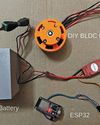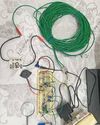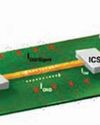
SURYANSH PRATAP SINGH is a Scientist 'B' at the Centre for Development of Telematics (C-DOT), the research and development centre of the Government of India. He earned his B.Tech degree in Electronics and Communication Engineering from MNNIT Allahabad.
ARKA MUKHERJEE is a Scientist 'E' and Team Leader at the Centre for Development of Telematics (C-DOT), the research and development centre of the Government of India. He possesses over 12 years of experience in designing embedded systems for optical access networks and quantum key distribution systems.
With over 65% of the global population now connected to the internet, data demand has surged to unprecedented levels. This relentless growth is fuelled by high-definition video streaming, extensive cloud computing, IoT, high-resolution multiplayer gaming, real-time online transactions, VR, and AR. Data transfer relies on three primary mediums: optical cables, copper cables, and wireless. While copper and wireless media suit short- to medium-range networks, optical fibre networks span thousands of miles, connecting cities, countries, and continents. The rapid expansion of internet users has pushed existing optical fibre infrastructure to its limits, necessitating the adoption of advanced technologies to meet future data needs.
Optical fibre: An overview An optical fibre carries information signals as light pulses in the near-infrared spectrum and consists of multiple layers (Fig. 1):
Core. The central internal layer of an optical fibre through which light propagates. It is typically composed of high-purity glass and has a higher refractive index than the cladding
This story is from the December 2024 edition of Electronics For You.
Start your 7-day Magzter GOLD free trial to access thousands of curated premium stories, and 9,000+ magazines and newspapers.
Already a subscriber ? Sign In
This story is from the December 2024 edition of Electronics For You.
Start your 7-day Magzter GOLD free trial to access thousands of curated premium stories, and 9,000+ magazines and newspapers.
Already a subscriber? Sign In

ESP32-Powered AUDIO-VISUAL SIREN
This sound alternator is designed to simulate the effects of a police siren, combining sound and light to create a dynamic audio-visual experience.

BLDC MOTOR With Web-Based Speed Control Using ESP32
Integrating wireless control into brushless direct current (BLDC) motor systems opens up exciting possibilities for applications such as remote-controlled cars, robots, and other innovative systems.

Pi Zero Portable BILINGUAL TRANSLATOR
This system is designed as a bilingual translator, leveraging the gTTS library to support multiple Indian languages, including English (en), Bengali (bn), Gujarati (gu), Hindi (hi), Kannada (kn), Malayalam (ml), Marathi (mr), Tamil (ta), Telugu (te), and Urdu (ur).

Op-Amp-Based VEHICLE THEFT DETECTOR
A simple, low-cost device can effectively alert homeowners or occupants if a parked vehicle is moved or tampered with.

loT SMART METER With Dashboard
Energy meters in homes track electricity usage, enabling accurate billing by governments and providers.

Choose The Right Cloud Platform For Implementing loT PROTOCOLS
Working with loT protocols like MQTT, AMQP, and CoAP on cloud platforms is essential for developing scalable and efficient lol applications. The choice of the programming platform will depend on factors like project requirements, existing skills, and target devices. Leveraging the appropriate libraries and cloud services can enable seamless integration of lol devices with cloud-based applications.

Why TMR SENSORS Lead Next-Generation Design
TMR sensors are gaining traction in industries needing precision and power efficiency. What makes them the go-to choice for modern designs?

DESIGNING PCBs For EMI Management
Electromagnetic interference can derail your PCB’s performance. EMI management is not just a technical necessity but a hallmark of exceptional PCB design.

CUTTING COSTS, NOT CORNERS: Building Large Scale Applications With Open Source Software
Here are some strategies and best practices for leveraging open source to create enterprise-grade web and mobile applications without sacrificing quality or functionality.

"We Are One Of India's Very Few State Bodies To Manage The Entire Lifecycle Of The Electronics EcosystemFrom Approvals To Subsidies."
What is Gujarat State Electronics Mission GSEM), and how is it attracting major investments in electronics manufacturing, particularly semiconductor manufacturing, to Gujarat? To delve deeper, Electronics For You’s Nijhum Rudra spoke with Manish Gurwani, the head of GSEM. Here is what he revealed...